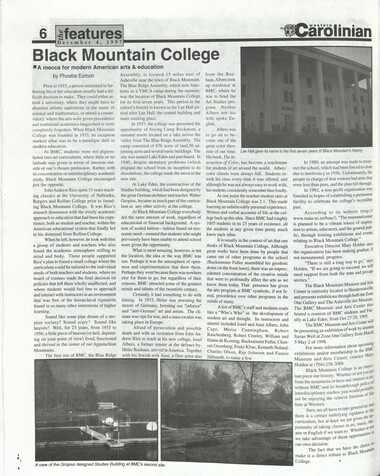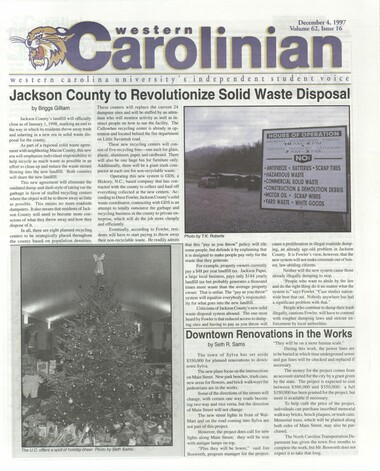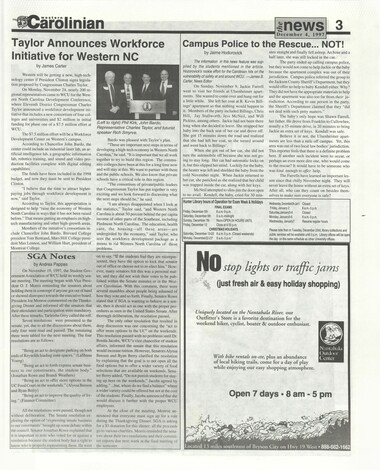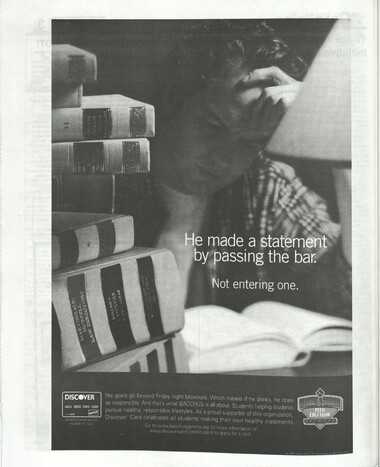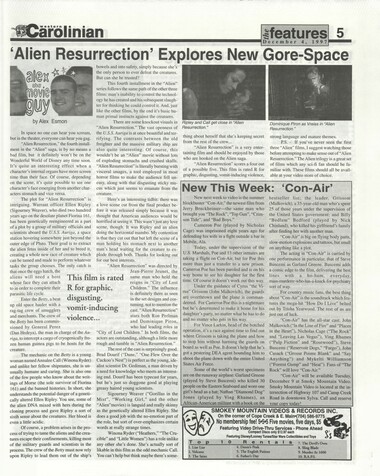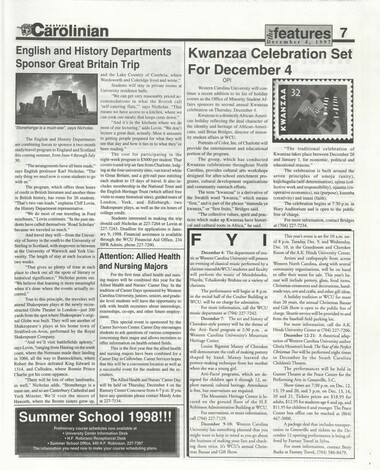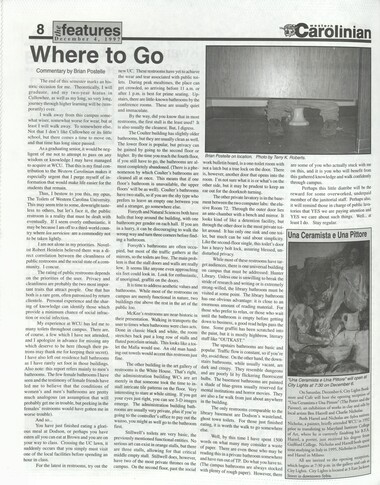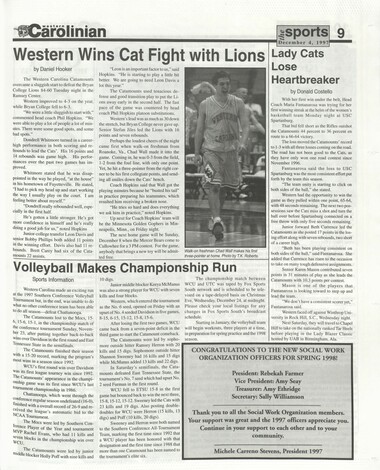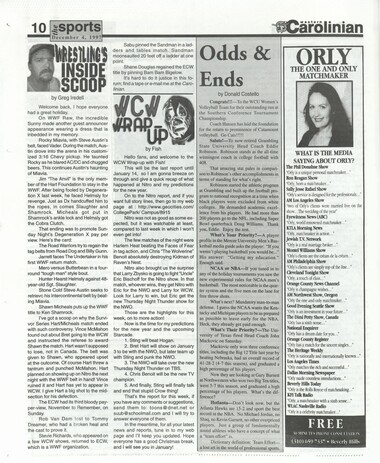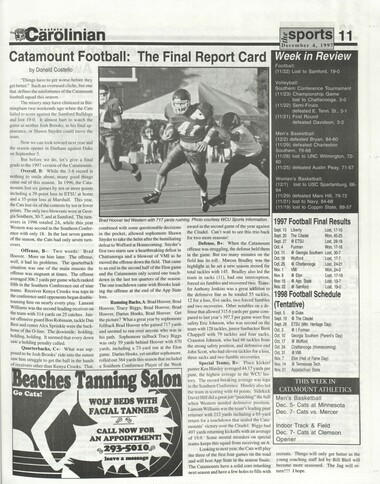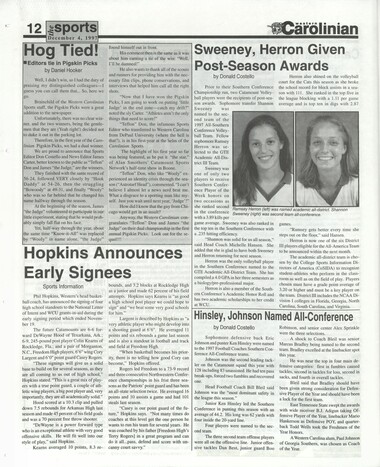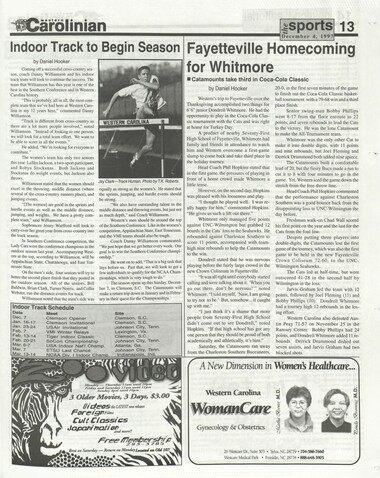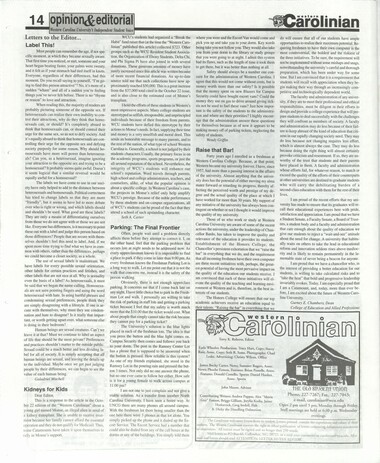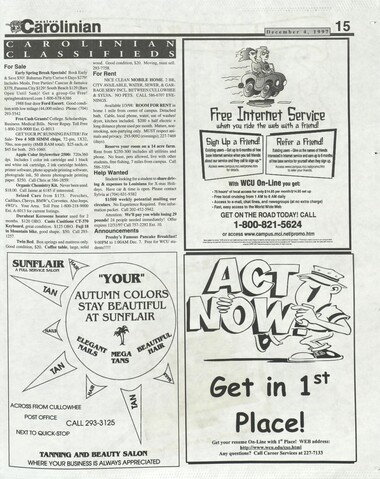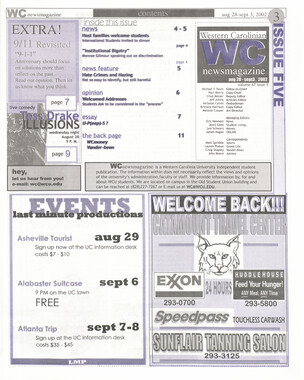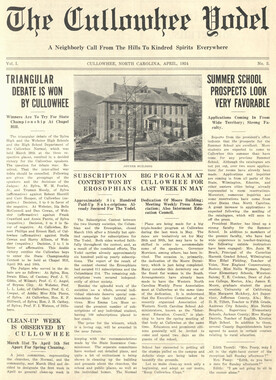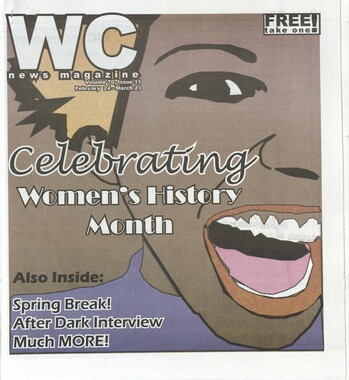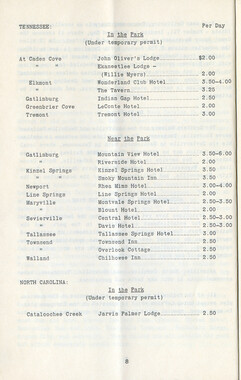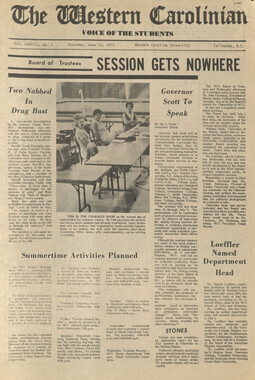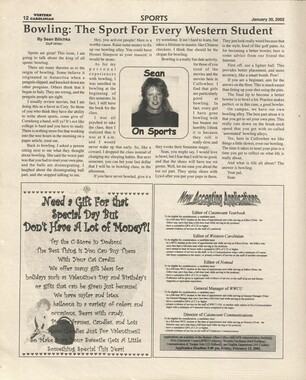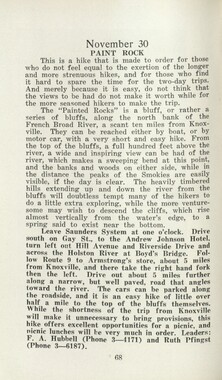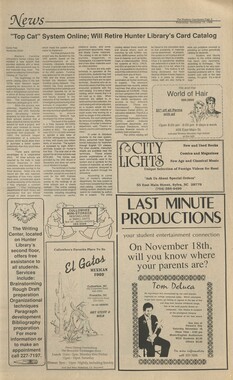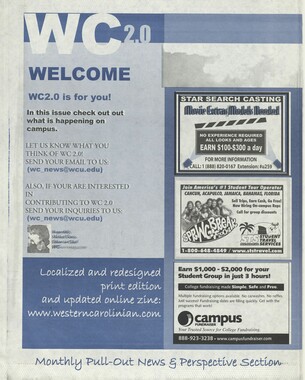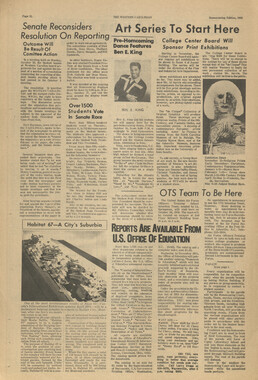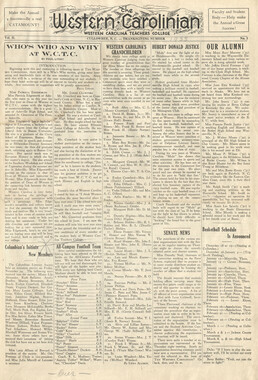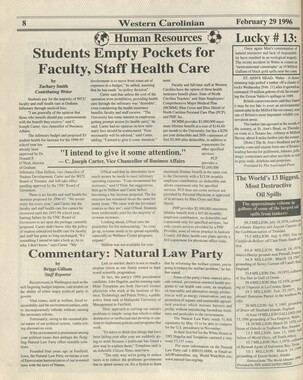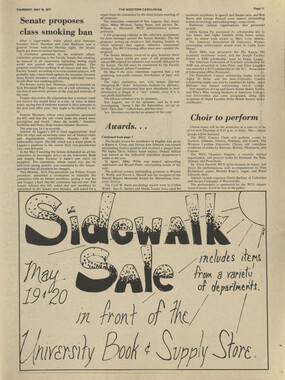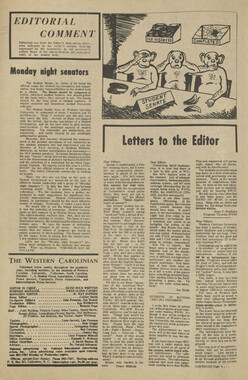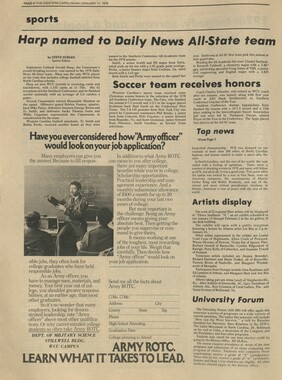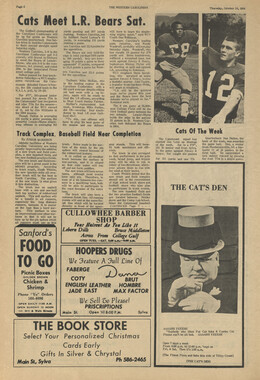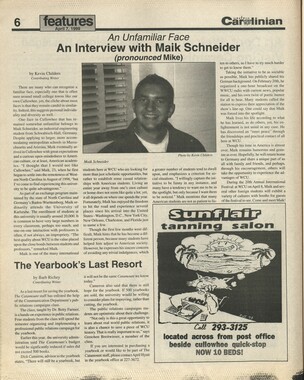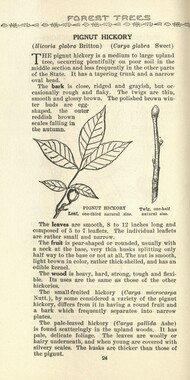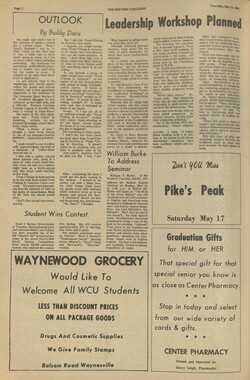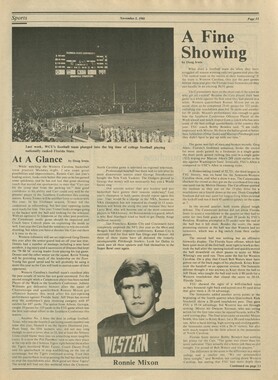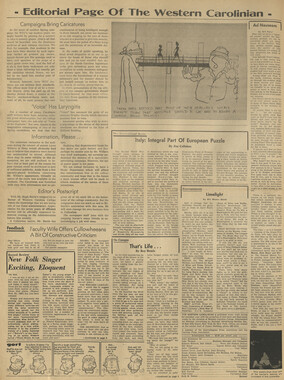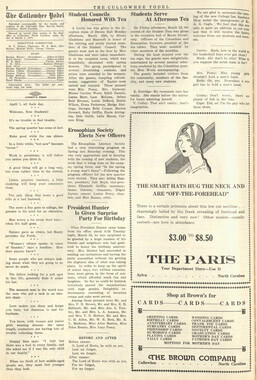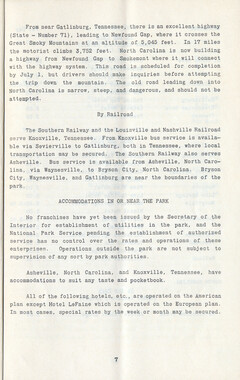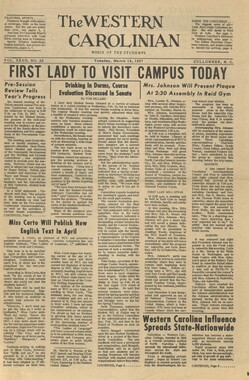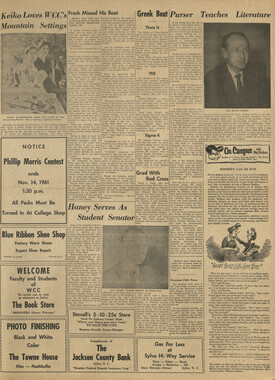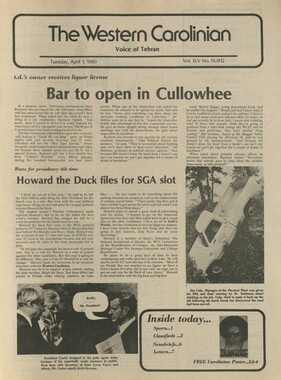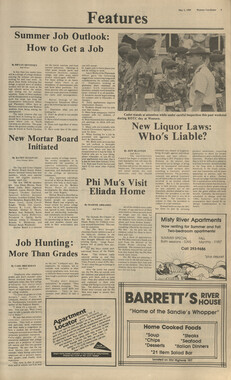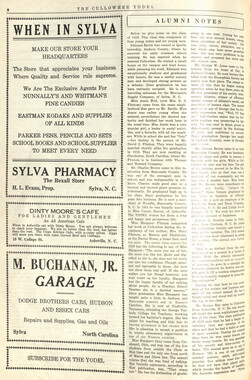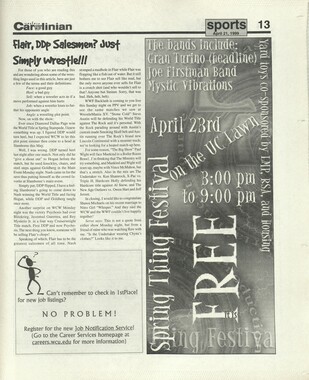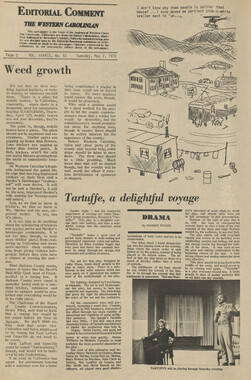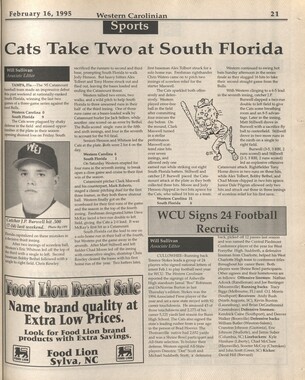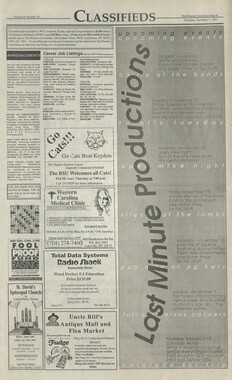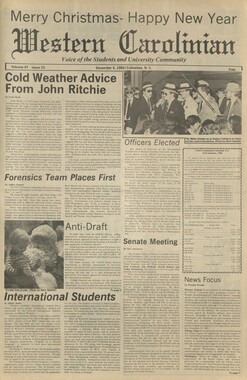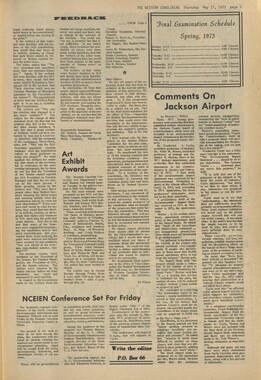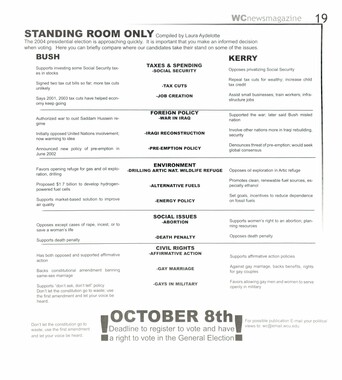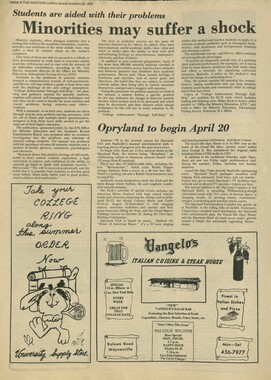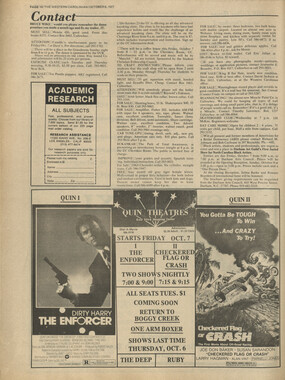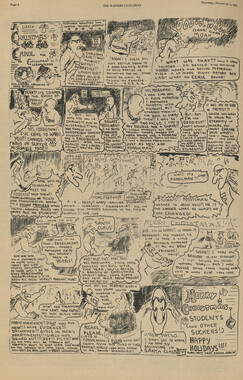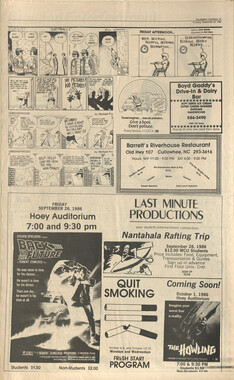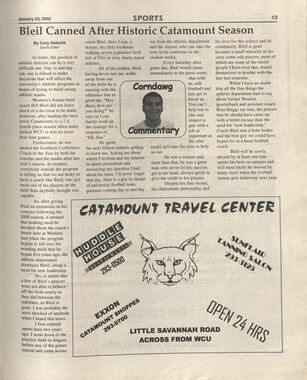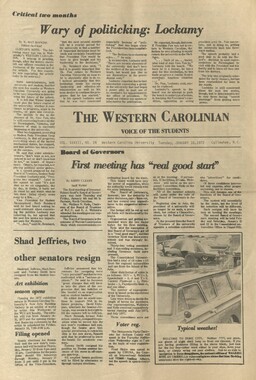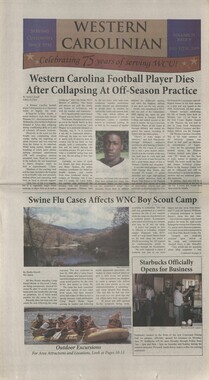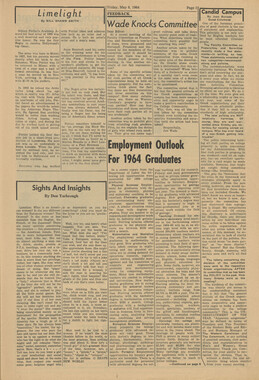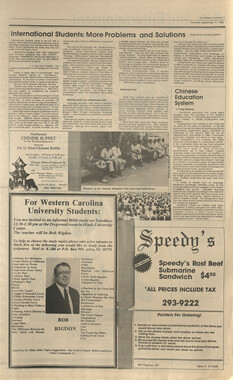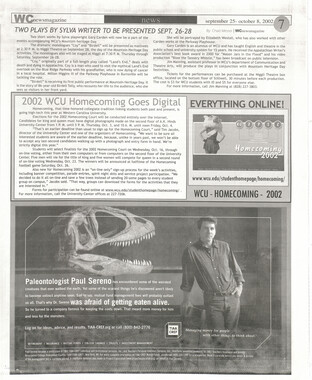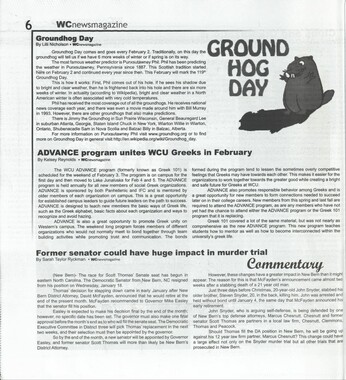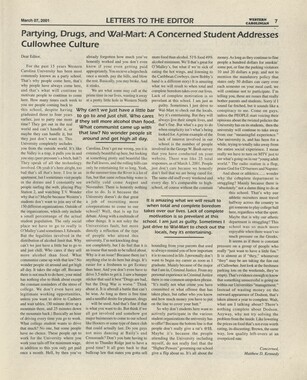Western Carolina University (21)
View all
- Canton Champion Fibre Company (2308)
- Cherokee Traditions (291)
- Civil War in Southern Appalachia (165)
- Craft Revival (1942)
- George Masa Collection (137)
- Great Smoky Mountains - A Park for America (3080)
- Highlights from Western Carolina University (422)
- Horace Kephart (973)
- Journeys Through Jackson (159)
- LGBTQIA+ Archive of Jackson County (89)
- Oral Histories of Western North Carolina (318)
- Picturing Appalachia (6617)
- Stories of Mountain Folk (413)
- Travel Western North Carolina (153)
- Western Carolina University Fine Art Museum Vitreograph Collection (129)
- Western Carolina University Herbarium (92)
- Western Carolina University: Making Memories (738)
- Western Carolina University Publications (2491)
- Western Carolina University Restricted Electronic Theses and Dissertations (146)
- Western North Carolina Regional Maps (71)
- World War II in Southern Appalachia (131)
University of North Carolina Asheville (6)
View all
- Allanstand Cottage Industries (62)
- Appalachian National Park Association (53)
- Bennett, Kelly, 1890-1974 (1463)
- Berry, Walter (76)
- Brasstown Carvers (40)
- Carver, George Washington, 1864?-1943 (26)
- Cathey, Joseph, 1803-1874 (1)
- Champion Fibre Company (233)
- Champion Paper and Fibre Company (297)
- Cherokee Indian Fair Association (16)
- Cherokee Language Program (22)
- Crowe, Amanda (40)
- Edmonston, Thomas Benton, 1842-1907 (7)
- Ensley, A. L. (Abraham Lincoln), 1865-1948 (275)
- Fromer, Irving Rhodes, 1913-1994 (70)
- George Butz (BFS 1907) (46)
- Goodrich, Frances Louisa (120)
- Grant, George Alexander, 1891-1964 (96)
- Heard, Marian Gladys (60)
- Kephart, Calvin, 1883-1969 (15)
- Kephart, Horace, 1862-1931 (313)
- Kephart, Laura, 1862-1954 (67)
- Laney, Gideon Thomas, 1889-1976 (439)
- Masa, George, 1881-1933 (61)
- McElhinney, William Julian, 1896-1953 (44)
- Niggli, Josephina, 1910-1983 (10)
- North Carolina Park Commission (105)
- Osborne, Kezia Stradley (9)
- Owens, Samuel Robert, 1918-1995 (11)
- Penland Weavers and Potters (36)
- Roberts, Vivienne (15)
- Roth, Albert, 1890-1974 (142)
- Schenck, Carl Alwin, 1868-1955 (1)
- Sherrill's Photography Studio (2565)
- Southern Highland Handicraft Guild (127)
- Southern Highlanders, Inc. (71)
- Stalcup, Jesse Bryson (46)
- Stearns, I. K. (213)
- Thompson, James Edward, 1880-1976 (226)
- United States. Indian Arts and Crafts Board (130)
- USFS (683)
- Vance, Zebulon Baird, 1830-1894 (1)
- Weaver, Zebulon, 1872-1948 (58)
- Western Carolina College (230)
- Western Carolina Teachers College (282)
- Western Carolina University (2008)
- Western Carolina University. Mountain Heritage Center (18)
- Whitman, Walt, 1819-1892 (10)
- Wilburn, Hiram Coleman, 1880-1967 (73)
- Williams, Isadora (3)
- Cain, Doreyl Ammons (0)
- Crittenden, Lorraine (0)
- Rhodes, Judy (0)
- Smith, Edward Clark (0)
- Appalachian Region, Southern (3032)
- Asheville (N.C.) (1945)
- Avery County (N.C.) (26)
- Blount County (Tenn.) (195)
- Buncombe County (N.C.) (1680)
- Cherokee County (N.C.) (283)
- Clay County (N.C.) (556)
- Graham County (N.C.) (238)
- Great Smoky Mountains National Park (N.C. and Tenn.) (535)
- Haywood County (N.C.) (3573)
- Henderson County (N.C.) (70)
- Jackson County (N.C.) (4925)
- Knox County (Tenn.) (35)
- Knoxville (Tenn.) (13)
- Lake Santeetlah (N.C.) (10)
- Macon County (N.C.) (421)
- Madison County (N.C.) (216)
- McDowell County (N.C.) (39)
- Mitchell County (N.C.) (135)
- Polk County (N.C.) (35)
- Qualla Boundary (982)
- Rutherford County (N.C.) (78)
- Swain County (N.C.) (2185)
- Transylvania County (N.C.) (270)
- Watauga County (N.C.) (12)
- Waynesville (N.C.) (86)
- Yancey County (N.C.) (72)
- Aerial Photographs (3)
- Aerial Views (60)
- Albums (books) (4)
- Articles (1)
- Artifacts (object Genre) (228)
- Bibliographies (1)
- Biography (general Genre) (2)
- Cards (information Artifacts) (38)
- Clippings (information Artifacts) (192)
- Copybooks (instructional Materials) (3)
- Crafts (art Genres) (622)
- Depictions (visual Works) (21)
- Design Drawings (1)
- Digital Moving Image Formats (2)
- Drawings (visual Works) (185)
- Envelopes (101)
- Exhibitions (events) (1)
- Facsimiles (reproductions) (1)
- Fiction (general Genre) (4)
- Financial Records (12)
- Fliers (printed Matter) (67)
- Glass Plate Negatives (381)
- Guidebooks (2)
- Internegatives (10)
- Interviews (823)
- Land Surveys (102)
- Letters (correspondence) (1045)
- Manuscripts (documents) (618)
- Maps (documents) (177)
- Memorandums (25)
- Minutes (administrative Records) (59)
- Negatives (photographs) (6090)
- Newsletters (1290)
- Newspapers (2)
- Notebooks (8)
- Occupation Currency (1)
- Paintings (visual Works) (1)
- Pen And Ink Drawings (1)
- Periodicals (194)
- Personal Narratives (10)
- Photographs (12977)
- Plans (maps) (1)
- Poetry (6)
- Portraits (4568)
- Postcards (329)
- Programs (documents) (181)
- Publications (documents) (2444)
- Questionnaires (65)
- Relief Prints (26)
- Sayings (literary Genre) (1)
- Scrapbooks (282)
- Sheet Music (2)
- Slides (photographs) (402)
- Songs (musical Compositions) (2)
- Sound Recordings (802)
- Specimens (92)
- Speeches (documents) (18)
- Tintypes (photographs) (8)
- Transcripts (329)
- Text Messages (0)
- A.L. Ensley Collection (275)
- Appalachian Industrial School Records (7)
- Appalachian National Park Association Records (336)
- Axley-Meroney Collection (2)
- Bayard Wootten Photograph Collection (20)
- Bethel Rural Community Organization Collection (7)
- Blumer Collection (5)
- C.W. Slagle Collection (20)
- Canton Area Historical Museum (2110)
- Carlos C. Campbell Collection (462)
- Cataloochee History Project (64)
- Cherokee Studies Collection (4)
- Daisy Dame Photograph Album (5)
- Daniel Boone VI Collection (1)
- Doris Ulmann Photograph Collection (112)
- Elizabeth H. Lasley Collection (1)
- Elizabeth Woolworth Szold Fleharty Collection (4)
- Frank Fry Collection (95)
- George Masa Collection (173)
- Gideon Laney Collection (452)
- Hazel Scarborough Collection (2)
- Hiram C. Wilburn Papers (28)
- Historic Photographs Collection (236)
- Horace Kephart Collection (861)
- Humbard Collection (33)
- Hunter and Weaver Families Collection (1)
- I. D. Blumenthal Collection (4)
- Isadora Williams Collection (4)
- Jesse Bryson Stalcup Collection (47)
- Jim Thompson Collection (224)
- John B. Battle Collection (7)
- John C. Campbell Folk School Records (80)
- John Parris Collection (6)
- Judaculla Rock project (2)
- Kelly Bennett Collection (1482)
- Love Family Papers (11)
- Major Wiley Parris Civil War Letters (3)
- Map Collection (12)
- McFee-Misemer Civil War Letters (34)
- Mountain Heritage Center Collection (4)
- Norburn - Robertson - Thomson Families Collection (44)
- Pauline Hood Collection (7)
- Pre-Guild Collection (2)
- Qualla Arts and Crafts Mutual Collection (12)
- R.A. Romanes Collection (681)
- Rosser H. Taylor Collection (1)
- Samuel Robert Owens Collection (94)
- Sara Madison Collection (144)
- Sherrill Studio Photo Collection (2558)
- Smoky Mountains Hiking Club Collection (616)
- Stories of Mountain Folk - Radio Programs (374)
- The Reporter, Western Carolina University (510)
- Venoy and Elizabeth Reed Collection (16)
- WCU Gender and Sexuality Oral History Project (36)
- WCU Mountain Heritage Center Oral Histories (25)
- WCU Oral History Collection - Mountain People, Mountain Lives (71)
- WCU Students Newspapers Collection (1923)
- Western North Carolina Tomorrow Black Oral History Project (69)
- William Williams Stringfield Collection (2)
- Zebulon Weaver Collection (109)
- African Americans (390)
- Appalachian Trail (35)
- Artisans (521)
- Cherokee art (84)
- Cherokee artists -- North Carolina (10)
- Cherokee language (21)
- Cherokee pottery (101)
- Cherokee women (208)
- Church buildings (190)
- Civilian Conservation Corps (U.S.) (111)
- College student newspapers and periodicals (2012)
- Dams (108)
- Dance (1023)
- Education (222)
- Floods (63)
- Folk music (1015)
- Forced removal, 1813-1903 (2)
- Forest conservation (220)
- Forests and forestry (1198)
- Gender nonconformity (4)
- Great Smoky Mountains National Park (N.C. and Tenn.) (181)
- Hunting (47)
- Landscape photography (25)
- Logging (122)
- Maps (83)
- Mines and mineral resources (9)
- North Carolina -- Maps (18)
- Paper industry (38)
- Postcards (255)
- Pottery (135)
- Railroad trains (72)
- Rural electrification -- North Carolina, Western (3)
- School integration -- Southern States (2)
- Segregation -- North Carolina, Western (5)
- Slavery (5)
- Sports (452)
- Storytelling (243)
- Waterfalls -- Great Smoky Mountains (N.C. and Tenn.) (66)
- Weaving -- Appalachian Region, Southern (280)
- Wood-carving -- Appalachian Region, Southern (328)
- World War, 1939-1945 (173)
Western Carolinian Volume 62 (63) Number 16
Item
Item’s are ‘child’ level descriptions to ‘parent’ objects, (e.g. one page of a whole book).
-
-
6 features December 1997 western ■ • • arolmian Black Mountain College ■A mecca for modern American by Phoebe Esmon Prior to 1933, a person interested in furthering his or her education usually had a difficult decision to make. They could either attend a university, where they might have to abandon artistic aspirations in the name of science and mathematics, or attend a conservatory, where the arts were given precedence and traditional academics languished or were completely forgotten. When Black Mountain College was founded in 1933, its inception marked what was to be a paradigm shift in modern education. At BMC, students were not pigeonholed into set curriculums, where little or no latitude was given in terms of interests outside of one's chosen profession. Rather, with its concentration on interdisciplinary academic study, Black Mountain College encouraged just the opposite. John Andrew Rice spent 13 years teaching classics at the University of Nebraska, Rutgers and Rollins College prior to founding Black Mountain College. It was Rice's staunch dissension with the overly academic approach to education that had been his experience, both as student and teacher, within the American educational system that finally led to his dismissal from Rollins College. When he left, however, he took with him a group of students and teachers who also found the academic atmosphere stifling to mind and body. These people supported Rice's plan to found a small college where the curriculum could be tailored to the individual needs of both teachers and students, where no board of trustees made the final decision on policies that left them wholly unaffected, and where students would feel free to approach and interact with instructors in an environment that was free of the hierarchical rigmarole found in so many other institutions of higher learning. Sound like some pipe dream of a Utopian society? Sound scary? Sound like heaven? Well, for 23 years, from 1933 to 1956, a little piece of heaven (or hell, depending on your point of view) lived, functioned and thrived in the center of our Appalachian Mountains. The first site of BMC, the Blue Ridge arts & education Assembly, is located 15 miles east of Asheville near the town of Black Mountain. The Blue Ridge Assembly, which now functions as a YMCA camp during the summer, was the location of Black Mountain College for its first seven years. This period in the school's history is known as the Lee Hall period after Lee Hall, the central building and main meeting place. In 1937, the college was presented the opportunity of buying Camp Rockmont, a summer resort located on a lake across the valley from The Blue Ridge Assembly. The camp consisted of 676 acres of land,50 adjoining acres and several rustic buildings. The site was named Lake Eden and purchased. In 1940, despite monetary problems (which plagued the school from its inception to its dissolution), the college made the move to the new site. At Lake Eden, the construction of the Studies building, which had been designed by the great German architect and teacher, Walter Gropius, became as much part ofthe curriculum as any other activity at the college. At Black Mountain College everybody did the same amount of work, regardless of educational or financial background. A system of scaled tuition—tuition based on economic need—ensured that students who might previously have been unable to attend school were given the opportunity. What is most amazing, however, is not the location, the idea or the way BMC was run. Perhaps it was the atmosphere of openness and experimentation that drew them. Perhaps they went because there was nowhere else for them to go, but regardless of their reasons, BMC attracted some of the greatest minds and talents of the twentieth century. Certainly it had something to do with timing. In 1933, Hitler was storming the streets of Germany, ferreting out "inferior" and "anti-German" art and artists. The climate was ripe for war, and a mass exodus was taking place in Europe. Afraid of persecution and possible death and with an invitation from John Andrew Rice to teach at his new college, Josef Albers, a former master at the defunct-by- Hitler Bauhaus, arrived in America. Together with his Jewish wife Anni, a fiber artist also from the Bauhaus, Albers took up residence at BMC, where he was to head the Art Studies program. Neither Albers nor his wife spoke English. Albers was to go on to become one of the great color theo- rists of our time. Lee Hall gave its name to the His book, The Interaction of Color, has become a touchstone for students of art around the world. Albers' color classes were always full. Students retook his class every time it was offered, and although he was not always easy to work with, his students consistently remember him fondly. At one point the teacher-student ratio at Black Mountain College was 2:1. This made learning an unbelievably personal experience. Written and verbal accounts of life at the college back up this idea. Since BMC had roughly 1005 students in its 23 years of existence, all the students at any given time pretty much knew each other. It is usually in the context of art that one thinks of Black Mountain College. Although great works have been done by people that came out of other programs at the school (Buckminster Fuller assembled his geodesic dome on the front lawn), there was an unprecedented concentration of the creative minds that were to profoundly affect the arts as we know them today. That presence has given the arts program at BMC symbolic, if not literal, precedence over other programs in the minds of many. A list of BMC's staff and students reads like a "Who's Who" in the development of modem art and thought. Its instructors and alumni included Josef and Anni Albers, John Cage, Merce Cunningham, Robert Rauchenberg, Robert Creeley, William and Elaine de Kooning, Buckminster Fuller, Clement Greenberg, Franz Kline, Kenneth Noland, Charles Olson, Ray Johnson and Fannie Hillsmith, to name a few. ■ first seven years of Black Mountain's history. In 1989, an attempt was made to resurrect the school, which had been forced to close due to insolvency in 1956. Unfortunately, the people in charge of that venture had aims that were less than pure, and the plan fell through. In 1992, a non-profit organization was founded in hopes of establishing a permanent facility to celebrate the college's incredible past. According to its website (http:// www.main.nc.us/bmc/), "The museum/center is planned to be a vibrant source of inspiration to artists, educators, and the general public, through hosting exhibitions and events relating to Black Mountain College." Executive Director Mary Holden says the organization has been making gradual, if not monumental, progress. "There is still a long way to go," says Holden. "If we are going to succeed, we will need support from both the state and private sectors." The Black Mountain Museum and Arts Center is currently located in Hendersonville and presents exhibitions through both the /on One Gallery and The Asheville Art Museum. The BMC Museum and Arts Center also hosted a reunion of BMC students and ^c ulty at Lake Eden, from Oct 27-29,199 • The BMCMuseumandArts Center^ be presenting an exhibition of work by alu Suzan Weil at Zone One Gallery from Marcn 5-May2of 1998. -n2 For more information about upcoming exhibitions and/or membership in the Museum and Arts Center, contact Holden at (704)-258-3088. Black Mountain College is an >mP tant piece our history. Whether or not yo ^ from the mountains or have any mtere ^ without BMC and its breakthrough ptw ]y wunuui divu~ anv*.«. nrobaW interdisciplinary studies, you woutu v )jfc not be enjoying the relative freedom here at Western. , j and Sure, we all have to take genera ^ ^ there is a certain stultifying ngidt* ^ ^ curriculum, but at least we are &v [(. the- portunity of taking classes in art, • _ ^ ^ ater or English if we want to. wn jg we take advantage of those oppon our own decision. choice to A view of the Gropius designed Studies Building at BMC's second site. The fact that we have the c ^ make is a direct tribute to BiacN College. *
Object
Object’s are ‘parent’ level descriptions to ‘children’ items, (e.g. a book with pages).
-
The Western Carolinian is Western Carolina University's student-run newspaper. The paper was published as the Cullowhee Yodel from 1924 to 1931 before changing its name to The Western Carolinian in 1933.
-
